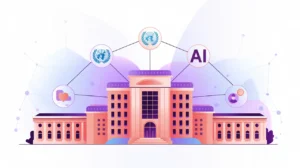Importance of Toxicity and Content Moderation
Toxicity and Content Moderation refer to the processes and technologies used to detect, filter, and manage harmful or inappropriate content generated or mediated by AI systems. Toxicity can include hate speech, harassment, misinformation, or violent imagery. Moderation ensures that platforms remain safe, inclusive, and aligned with community standards. Its importance today lies in the scale and speed at which AI can amplify toxic content, influencing public discourse and social cohesion.
For social innovation and international development, toxicity and content moderation matter because mission-driven organizations often facilitate digital spaces where communities engage, learn, and seek support. Effective moderation protects vulnerable groups and upholds the integrity of civic dialogue.
Definition and Key Features
Content moderation systems use natural language processing, image recognition, and machine learning classifiers to flag or remove harmful content. Hybrid models combine automation with human moderators for nuanced review. Open-source tools such as Perspective API support toxicity detection, while platforms like Meta and YouTube deploy large-scale moderation infrastructures.
These are not the same as general censorship, which suppresses lawful speech, nor are they equivalent to quality assurance in software development. Toxicity and moderation specifically address harmful behaviors and the risks of exposure to damaging content.
How this Works in Practice
In practice, moderation systems may scan user comments for offensive language, analyze images for prohibited material, or assess videos for misinformation. AI can prioritize high-risk cases for human review or apply contextual rules (e.g., distinguishing medical discussion from harmful content). Organizations also design appeal and redress mechanisms to ensure fairness.
Challenges include balancing free expression with safety, addressing bias in moderation algorithms, and protecting the mental health of human moderators. Over-reliance on automation risks false positives, while under-reliance can leave harmful content unchecked.
Implications for Social Innovators
Toxicity and content moderation are central to mission-driven digital platforms. Health programs use them to protect online communities from stigma or misinformation around sensitive conditions. Education initiatives rely on moderation in e-learning platforms to ensure safe student interactions. Humanitarian agencies deploy moderation tools in crisis communication systems to prevent panic or harmful narratives. Civil society groups advocate for transparent, rights-based moderation practices to preserve civic space.
By combining AI tools with human judgment, content moderation reduces harm, fosters trust, and enables inclusive participation in digital environments.







